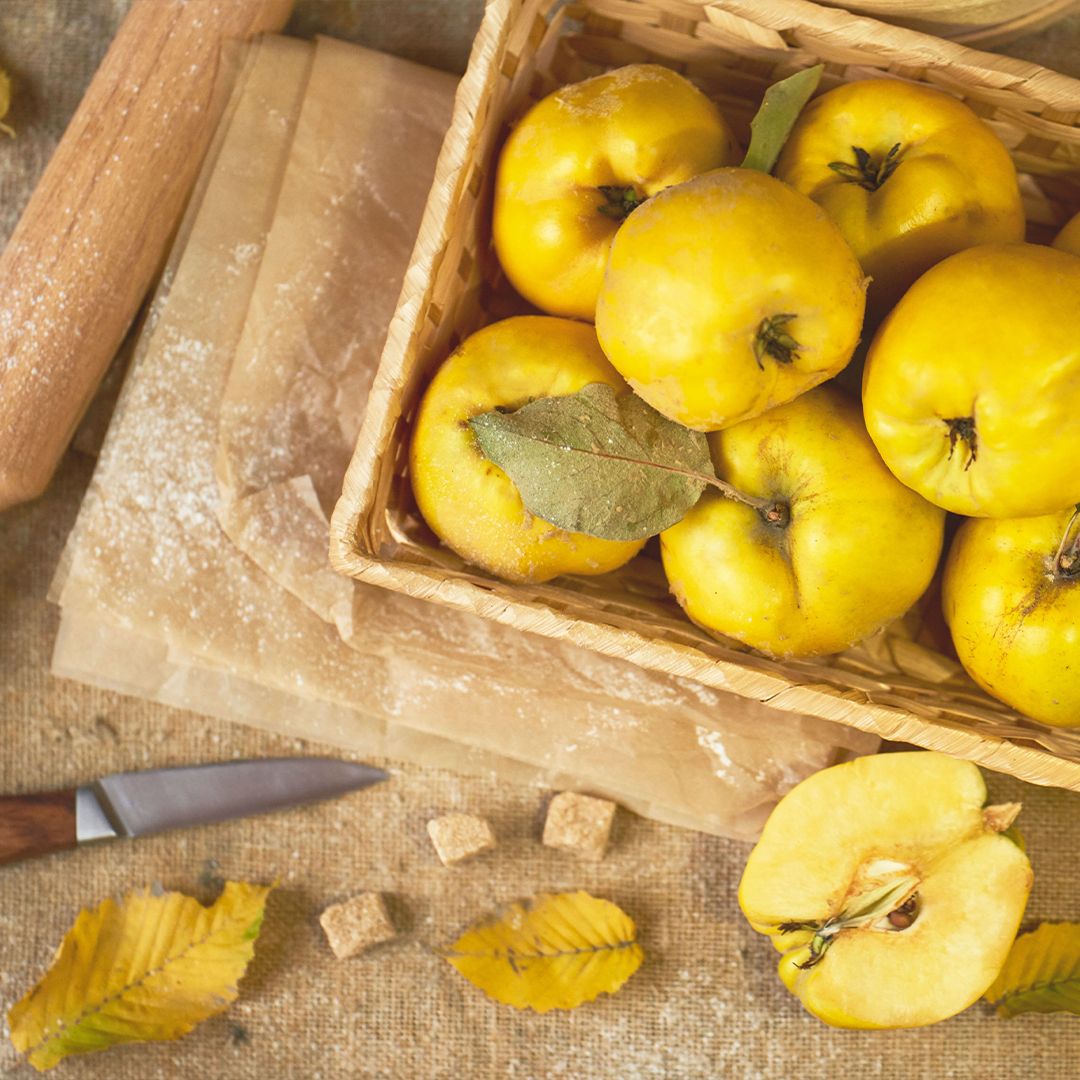QUINCE AND ITS PLACE IN TURKISH CULTURE
The quince (Turkish: Ayva) is a member of the Rosa family and a close relative of apples and pears. The wild fruit is thought to have originated in the regions of Anatolia, Greece and the Crimea. The most common varieties of quince in Turkey are the Bardak, Demir, Ekmek, Limon and Esme. The Bardak quince is most widely cultivated in the province of Kocaeli, and characterized by a downy peel, crisp juicy flesh and tangy flavor. Quinces are harvested in late September, tied in bunches, and stored in cellars for the winter. The Demir (iron) quince that ripens in October is aptly named on account of its hard dense texture. The Ekmek (bread) quince that is gathered in September is a good keeper and preferred by many people because it does not have the astringent flavor of many quinces. The Limon (lemon) quince is another popular variety so called because of its bright yellow skin, and the esme is an eating variety widely cultivated in the Marmara region which keeps well until the end of March.
Quinces are widely used in Turkish cuisine. In many places they are simply roasted whole over a charcoal fire and then split open and eaten with a spoon. Quince pudding with clotted cream is a favorite winter dessert, and many other types of sweet puddings and preserves are made of this fruit. Quinces are also an ingredient of various savory dishes, such as rice or bulgur pilaf, kebabs, meat stews, and salads, and they can be stuffed and cooked in various ways as a vegetable.




